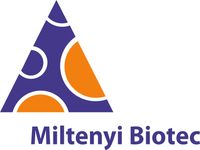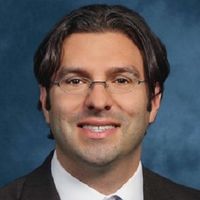Millipore Sigma is a leading science and technology company in healthcare, life science and performance materials. Around 50,000 employees work to further develop technologies that improve and enhance life - from biopharmaceutical therapies to treat cancer or multiple sclerosis ...
See more-
Carl Zeiss Microscopy, LLC
ZEISS Microscopy is the world's only one-stop manufacturer of light, electron, X-ray and ion microscope systems and offers solutions for correlative microscopy. The portfolio comprises of products and services for life sciences, materials and industrial research, as well as ...
See more -
Sartorius
The Sartorius Group is a leading international partner of biopharmaceutical research and the industry. With innovative laboratory instruments and consumables, the Group's Lab Products & Services Division concentrates on serving the needs of laboratories performing research and ...
See more -
Miltenyi Biotec
For over 30 years, Miltenyi Biotec has been a leader in the development of products that empower the advancement of biomedical research and enable cell and gene therapy. We provide innovative tools to help with your sample preparation, cell isolation, cell culture, and cell ...
See more -
LI-COR Biosciences
LI-COR first introduced scientific instruments for plant science research and quickly grew to provide scientists tools for such diverse disciplines as atmospheric research and the study of how proteins interact at the cellular level. LI-COR Biosciences is a global leader in the ...
See more -
Drexel University Online
YOU WILL STAND OUT TO EMPLOYERS. As a top-ranked, regionally accredited institution, known for its interdisciplinary approach to applied education, Drexel consistently gets high marks from employers for its online degree and certificate programs. In fact, we have made it our ...
See more -
NanoString Technologies
NanoString Technologies (NASDAQ: NSTG) is a publicly held provider of life science tools for translational research and molecular diagnostics. The company's technology enables a wide variety of basic research, translational medicine and in vitro diagnostics applications ...
See more
Drug Discovery & Development Virtual Event Series 2020


Labroots and the Drug Discovery planning committee are pleased to announce its 3rd annual event in the Drug Discovery & Development Virtual Event Series. The Drug Discovery planning committee carefully planned and selected speakers that best represent the key challenges, opportunities, and issues in the current landscape. These industry leaders discuss the advancements, challenges and successes of discovery and develop new medications and therapies
New Practices in Early Phase Drug Discovery >>
- Alternative In-Vitro Approaches
- Novel In-Vivo Techniques
- CRISPR-Cas9 as a Drug Discovery Tool
- Organ-on-a-Chip and 3D Cultures in Screening
Advancement of Biomarkers in Drug Development >>
- Liquid Biopsies
- Precision Medicine
- PK/PD Modelling and Simulation
- Receptor Occupancy
Modern Approaches to Clinical Development >>
- Case Study Keynote
- Combination Therapies
- CAR-T/Immunotherapy
- Precision Medicine
- Direct to Patient Clinical Trials
Our virtual conference allows you to participate in a global setting with no travel or cost to you. The event will remain open 6 months from the date of the live event. The webinars will be available for unlimited on-demand viewing.
Continuing Education
LabRoots is approved as a provider of continuing education programs in the clinical laboratory sciences by the ASCLS P.A.C.E. ® Program. By attending this event, you can earn 1 Continuing Education credit per presentation for a maximum of 30 credits.
Use #LRdrug to follow the conversation!
Presentations Share
Starting with our 2020 Drug Discovery & Development virtual event, LabRoots is introducing our new agenda format. We will be offering a full agenda of scheduled presentations throughout the day of the event; including Keynotes, Panels and Sponsored speakers. We will also be offering unlimited presentations available for immediate On-Demand viewing when the doors to our virtual event open. The content of our presentations will be delivered by experts in industry and academia. We hope you enjoy our new format!
-
-
FEB 26, 2020 12:00 PM PST
Characterizing the role of B cells in Response to Immunotherapy with the NanoString GeoMx Platform
Sarah Warren, PhD
Senior Director of Advanced Applications, NanoString TechnologiesBIOGRAPHYSponsored By: NanoString Technologies -
FEB 26, 2020 10:30 AM PST
QIAGEN CLC Genomics Workbench 20 - scalable software for NGS data analysis
-
FEB 26, 2020 9:00 AM PST
CRISPR Based Screening: Advantages of Transcriptional Activators and Inhibitors
Andrew Ravanelli, PhD
Senior R&D Scientist, Genome and Epigenome Editing, MilliporeSigmaBIOGRAPHYSponsored By: MilliporeSigma -
FEB 26, 2020 7:30 AM PST
Keynote Presentation: Emerging Drug Combinations: Evolution From Pre-Clinical Discovery to Clinical Development
Khyati Shah, PhD
Post Doctoral Research Scholar at University of California, San FranciscoBIOGRAPHY -
FEB 26, 2020 6:00 AM PST
Keynote Presentation: Discovery and Development of a Novel First-in-Class Resuscitative Agent
Professor Anil Gulati, MD, PhD
Chairman & Chief Executive Officer of Pharmazz, Inc.; Adjunct Professor, Colleges of Pharmacy and Graduate Studies, Midwestern University; Department of Bioengineering, University of IllinoisBIOGRAPHY -
CK18 as a Biomarker in NASH Clinical Trials
-
Generation of expanded primary liver cells
-
Human Tissue models for better therapies
-
Measuring What Matters: Proliferation and Cell Death Biomarkers for Oncology Research
-
Microfabricated Human Liver Tissues for Drug Development
Salman Khetani, PhD
Associate Professor, Department of Bioengineering, University of Illinois at ChicagoBIOGRAPHY -
Microphysiological Systems for Human Focused Drug Discovery
-
Organoids: A Revolutionary New Tool for Drug Screening
-
Uncovering the mechanism of stress-resistant DNA replication in cancer cells using a modern single-molecule technique
Chames Kermi, PhD, PharmD
Postdoctoral Fellow, Chemical and Systems Biology, Stanford University School of MedicineBIOGRAPHY -
Vancomycin: How might Urinary Biomarkers and Precision Dosing create Precision Medicine for the most frequently utilized antibiotic in the hospital?
Marc H. Scheetz, PharmD, MSc, FCCP, FCP
Associate Dean of Research and Professor, College of Pharmacy, Professor, College of Graduate Studies, Departments of Pharmacology and Biomedical Sciences, Director, Pharmacometrics Center of Excellence, Midwestern UniversityBIOGRAPHY
- New Practices in Early Phase Drug Discovery
-
Generation of expanded primary liver cells
-
Microphysiological Systems for Human Focused Drug Discovery
-
Human Tissue models for better therapies
-
Organoids: A Revolutionary New Tool for Drug Screening
-
Microfabricated Human Liver Tissues for Drug Development
Salman Khetani, PhD
Associate Professor, Department of Bioengineering, University of Illinois at ChicagoBIOGRAPHY -
FEB 26, 2020 12:00 PM PST
Characterizing the role of B cells in Response to Immunotherapy with the NanoString GeoMx Platform
Sarah Warren, PhD
Senior Director of Advanced Applications, NanoString TechnologiesBIOGRAPHYSponsored By: NanoString Technologies -
- Advancement of Biomarkers in Drug Development
-
Vancomycin: How might Urinary Biomarkers and Precision Dosing create Precision Medicine for the most frequently utilized antibiotic in the hospital?
Marc H. Scheetz, PharmD, MSc, FCCP, FCP
Associate Dean of Research and Professor, College of Pharmacy, Professor, College of Graduate Studies, Departments of Pharmacology and Biomedical Sciences, Director, Pharmacometrics Center of Excellence, Midwestern UniversityBIOGRAPHY -
CK18 as a Biomarker in NASH Clinical Trials
-
Measuring What Matters: Proliferation and Cell Death Biomarkers for Oncology Research
- Modern Approaches to Clinical Development
-
Uncovering the mechanism of stress-resistant DNA replication in cancer cells using a modern single-molecule technique
Chames Kermi, PhD, PharmD
Postdoctoral Fellow, Chemical and Systems Biology, Stanford University School of MedicineBIOGRAPHY -
FEB 26, 2020 6:00 AM PST
Keynote Presentation: Discovery and Development of a Novel First-in-Class Resuscitative Agent
Professor Anil Gulati, MD, PhD
Chairman & Chief Executive Officer of Pharmazz, Inc.; Adjunct Professor, Colleges of Pharmacy and Graduate Studies, Midwestern University; Department of Bioengineering, University of IllinoisBIOGRAPHY -
FEB 26, 2020 7:30 AM PST
Keynote Presentation: Emerging Drug Combinations: Evolution From Pre-Clinical Discovery to Clinical Development
Khyati Shah, PhD
Post Doctoral Research Scholar at University of California, San FranciscoBIOGRAPHY -
FEB 26, 2020 9:00 AM PST
CRISPR Based Screening: Advantages of Transcriptional Activators and Inhibitors
Andrew Ravanelli, PhD
Senior R&D Scientist, Genome and Epigenome Editing, MilliporeSigmaBIOGRAPHYSponsored By: MilliporeSigma -
FEB 26, 2020 10:30 AM PST
QIAGEN CLC Genomics Workbench 20 - scalable software for NGS data analysis
Speakers Share
-
Professor Anil Gulati, MD, PhD
Chairman & Chief Executive Officer of Pharmazz, Inc.; Adjunct Professor, Colleges of Pharmacy and Graduate Studies, Midwestern University; Department of Bioengineering, University of Illinois
BIOGRAPHY
-
Khyati Shah, PhD
Post Doctoral Research Scholar at University of California, San Francisco
BIOGRAPHY
-
Erin Edwards, PhD
Head of Services, Visikol, Inc.
BIOGRAPHY
-
Chames Kermi, PhD, PharmD
Postdoctoral Fellow, Chemical and Systems Biology, Stanford University School of Medicine
BIOGRAPHY
-
Salman Khetani, PhD
Associate Professor, Department of Bioengineering, University of Illinois at Chicago
BIOGRAPHY
-
Tomasz Kostrzewski, PhD
Director, Biology, CN Bio Innovations Limited
BIOGRAPHY
-
Josh Mahlios, PhD
Senior Marketing Product Manager, Miltenyi Biotec
BIOGRAPHY
-
Astrid Nörenberg, PhD
Managing Director, upcyte technologies GmbH
BIOGRAPHY
-
Rekha Pal, PhD
Director, Scientific Engagement, Crown Bioscience, Inc.
BIOGRAPHY
-
Andrew Ravanelli, PhD
Senior R&D Scientist, Genome and Epigenome Editing, MilliporeSigma
BIOGRAPHY
-
Leif Schauser, PhD
Director, Global Product Management, QIAGEN
BIOGRAPHY
-
Marc H. Scheetz, PharmD, MSc, FCCP, FCP
Associate Dean of Research and Professor, College of Pharmacy, Professor, College of Graduate Studies, Departments of Pharmacology and Biomedical Sciences, Director, Pharmacometrics Center of Excellence, Midwestern University
BIOGRAPHY
-
Olivia Stricker, PhD
Commercial Business Development Manager, Diapharma Group, Inc.
BIOGRAPHY
-
Sebastiaan Trietsch, PhD
Chief Technology Officer, Mimetas -The Organ on a Chip Company
BIOGRAPHY
-
Jessica Tuohy, PhD
Scientific Product Manager, DiaPharma Group, Inc.
BIOGRAPHY
-
Sarah Warren, PhD
Senior Director of Advanced Applications, NanoString Technologies
BIOGRAPHY
-
Armin Wolf, PhD
Chief Scientific Officer, InSphero AG
BIOGRAPHY
-
Annette Gilchrist
An Associate Professor with Midwestern University, Dr. Annette Gilchrist has a PhD in Immunology from the University of Connecticut Health Center and a MS in Biochemistry from the University of Connecticut. Previously, she was with Cue Biotech and Caden Biosciences, companies she ...
See more -
Matthew Flegal
Matt entered the research field over 20 years ago as a lab animal technician at the TSI/Mason contract research facility. He has worked at both contract facilities such as TSI and OREAD Biosafety as well in industry at Pharmacia, Pfizer, and Sanofi-Aventis. During that period he ...
See more -
Khyati Shah
Khyati Shah received her Ph.D. in Molecular Pharmacology from the University of the Pacific, Stockton, California. Her graduate research was completed in the lab of Jesika Faridi, Ph.D. Her work focused on the investigation of the mechanism of Akt induced tamoxifen resistance in ...
See more -
Martin Shaw
Between 1994-2015 he worked at EKF Diagnostics in Wales (formerly Argutus Medical) where he introduced and promoted a wide range of novel kidney and liver tests, including important biomarkers that are now being evaluated by the IMI (Innovative Medicines Initiative) and FDA as ...
See more -
Matthew Shipton
Over the past 16 years, Mr. Shipton has amassed deep domain expertise in cell-based products and services. Currently serving as President of Novabiosis, Inc. Mr. Shipton brings a skill for implementing sales-driven business strategies, an extensive track record of meeting and ...
See more
Event Series

Drug Discovery & Development Virtual Event Series 2026

Drug Discovery & Development Virtual Event Series 2025

Drug Discovery & Development Virtual Event Series 2024

Drug Discovery & Development Virtual Event Series 2023

Drug Discovery & Development Virtual Event Series 2022

Drug Discovery & Development Virtual Event Series 2021

Drug Discovery Virtual Event Series 2019









































































